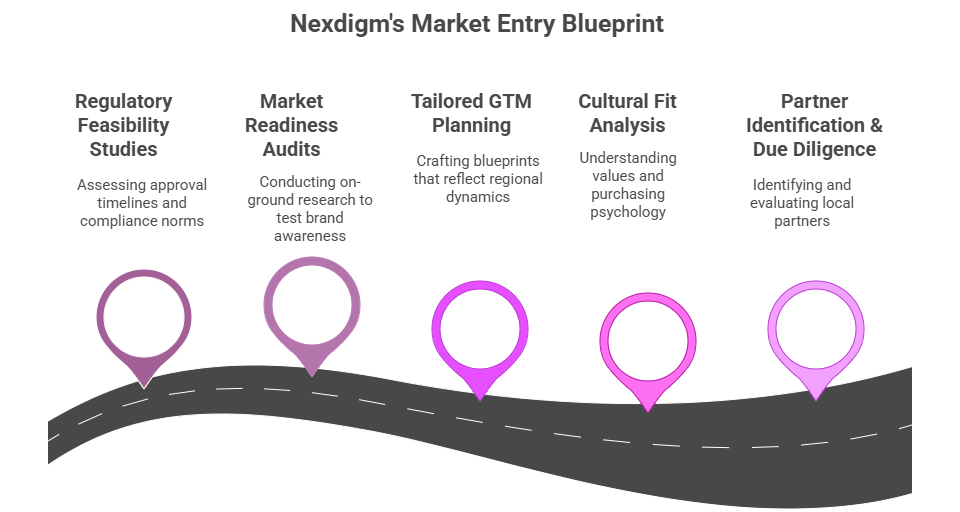Winning Global Markets Starts with One Truth that What Works at Home Rarely Works Abroad
Entering a new country is a test of how deeply you understand regulatory reality, cultural nuance, and commercial logic. With over 72% of cross-border market entries failing to meet year-one targets (OECD, 2024), the biggest risks come from misalignment.
Winning globally now requires market-specific, compliance-ready, culturally aligned strategies.
Why Local Alignment is Non-Negotiable
Even the best global strategy collapses without local grounding. These are the layers that determine success:
- Regulatory Environments That Vary Widely
- Drug and device approvals in Southeast Asia can take 12–24 months, while GCC markets often clear compliant products within 4–8 months.
- Labeling norms, import rules, and mandatory certifications vary even within the same region.
- Ignoring these differences leads to launch delays, product seizures, or penalties.
- Consumer Behavior and Buying Patterns
- Tier-2 Indian cities show 2–3× higher price sensitivity than metros.
- Japan’s consumers value heritage and compliance, while UAE buyers prioritize innovation and convenience.
- Packaging cues, language, colors, and even imagery can make or break adoption.
- Local psychology = global success.
- Distribution and Business Norms
- MENA remains 60–70% distributor-led, relying on relationship networks.
- Southeast Asia sees 40%+ sales flowing through online marketplaces.
- B2B cycles vary: tender-driven vs. relationship-led vs. performance-based.
- A misaligned GTM approach instantly weakens penetration and profitability.
Nexdigm’s Role in Structuring Localized Market Entry Blueprints
Nexdigm’s Market Entry strategy helps companies bridge the gap between global ambition and local ground realities. Our frameworks ensure every entry decision is compliant, culturally aligned, commercially viable, and future-ready.
- Regulatory Feasibility Studies: We map regulatory authorities, compliance norms, dossier requirements, and expected timelines.
- Market Readiness Audits: On-ground and digital assessments covering awareness, acceptance barriers, pricing fitment, and channel viability.
- Tailored GTM Planning: We design region-specific strategies including: D2C, distributor, or hybrid models, Pricing localization, and Promotion and messaging alignment.
- Cultural Fit Analysis: We decode values, decision triggers, communication cues, and buyer psychology to ensure relevance.
- Partner Identification & Due Diligence: We evaluate distributors, JV partners, and service providers across capability, governance, market network, and compliance.

Nexdigm Case
A global consumer brand expanding into GCC and Southeast Asia struggled with misaligned pricing, unclear regulatory pathways, and weak distributor performance. Nexdigm conducted a multi-country readiness audit, mapped approval cycles, screened 27 potential distributors, and redesigned the regional GTM blueprint. Within five months, the company secured compliant approvals, onboarded high-performing partners, and improved initial sell-through by 18%.
To take the next step, simply visit our Request a Consultation page and share your requirements with us.
Harsh Mittal
+91-8422857704

